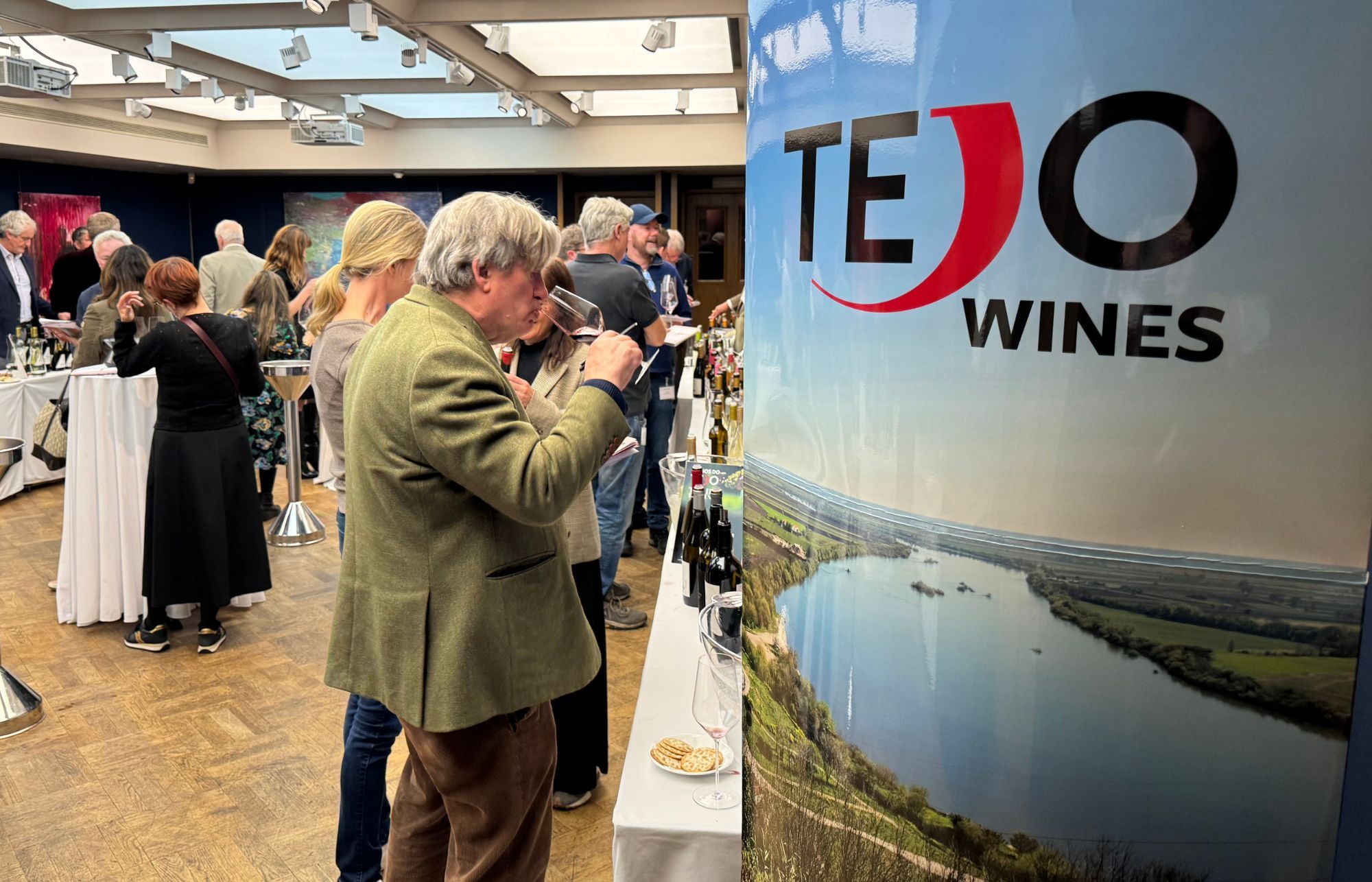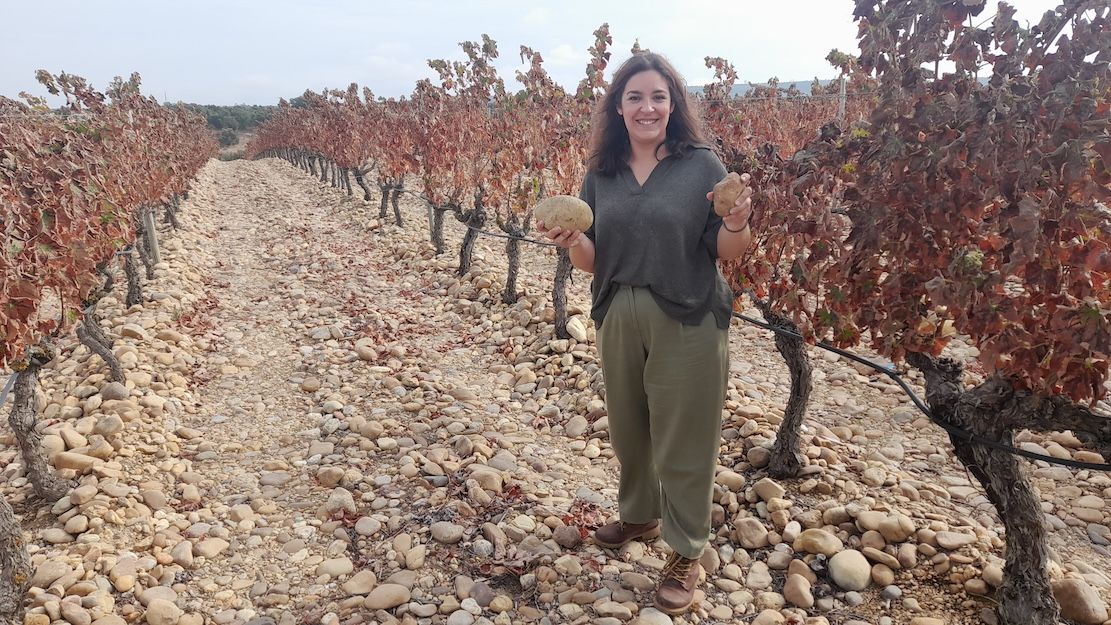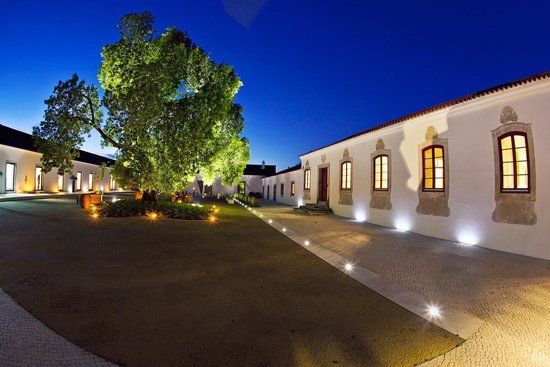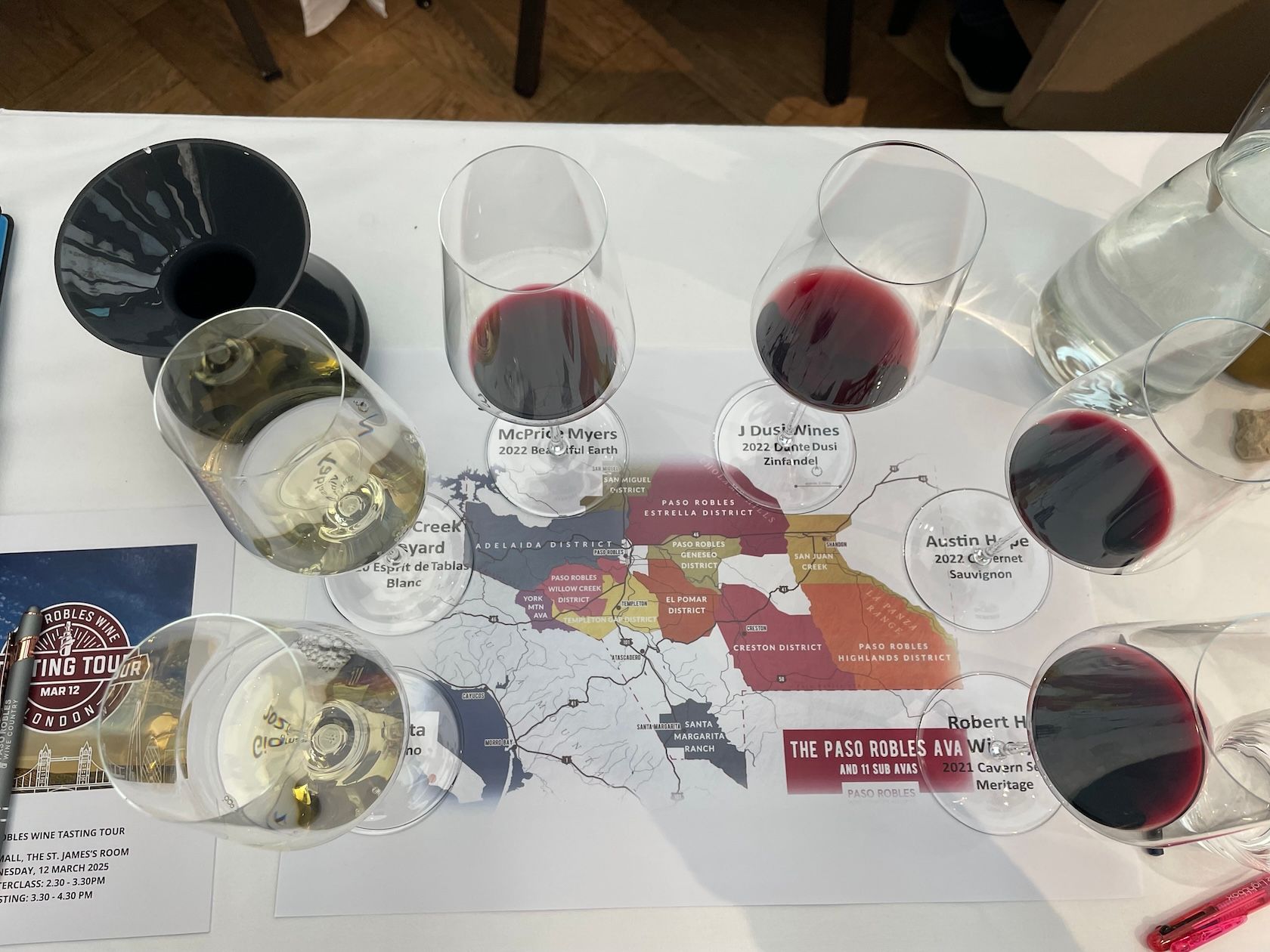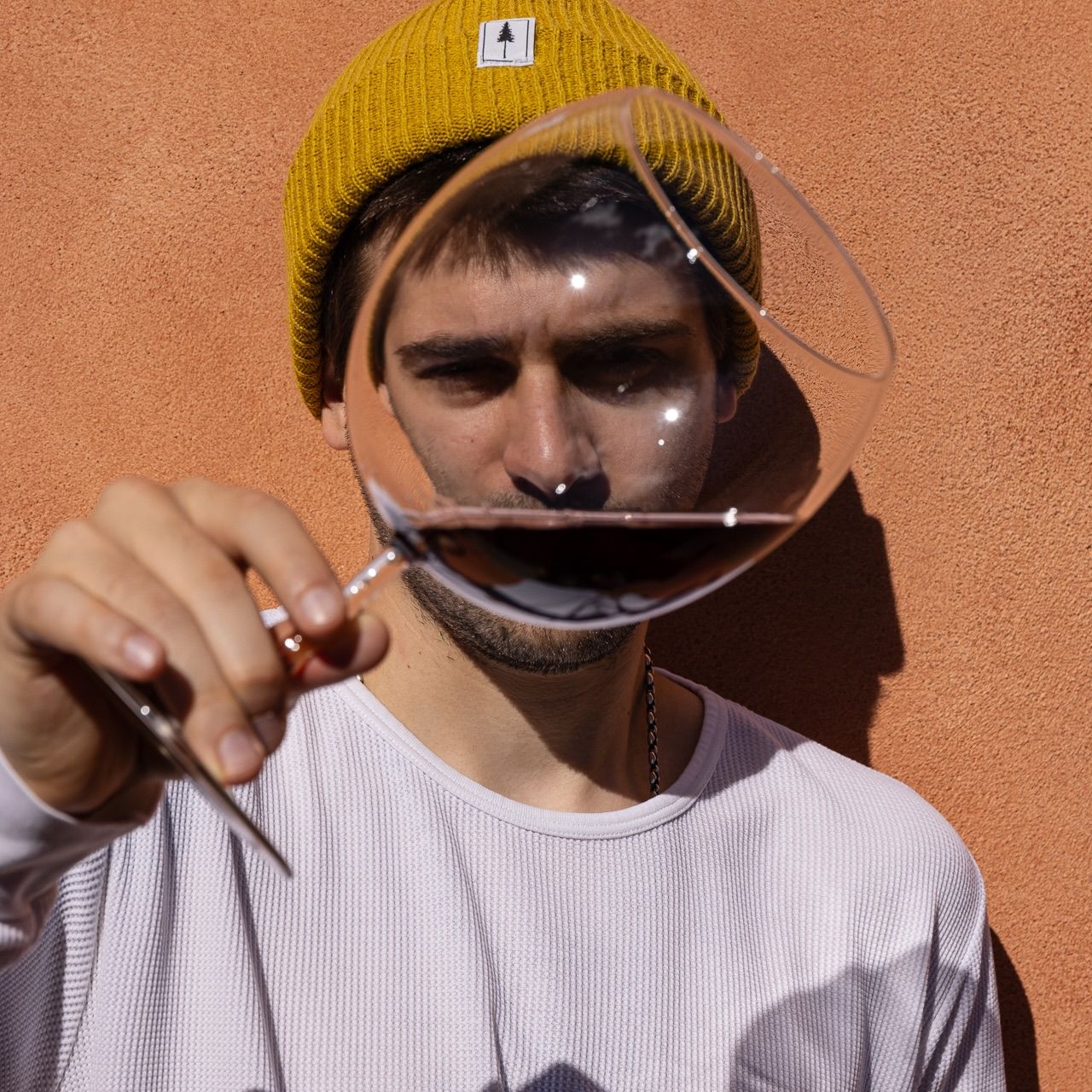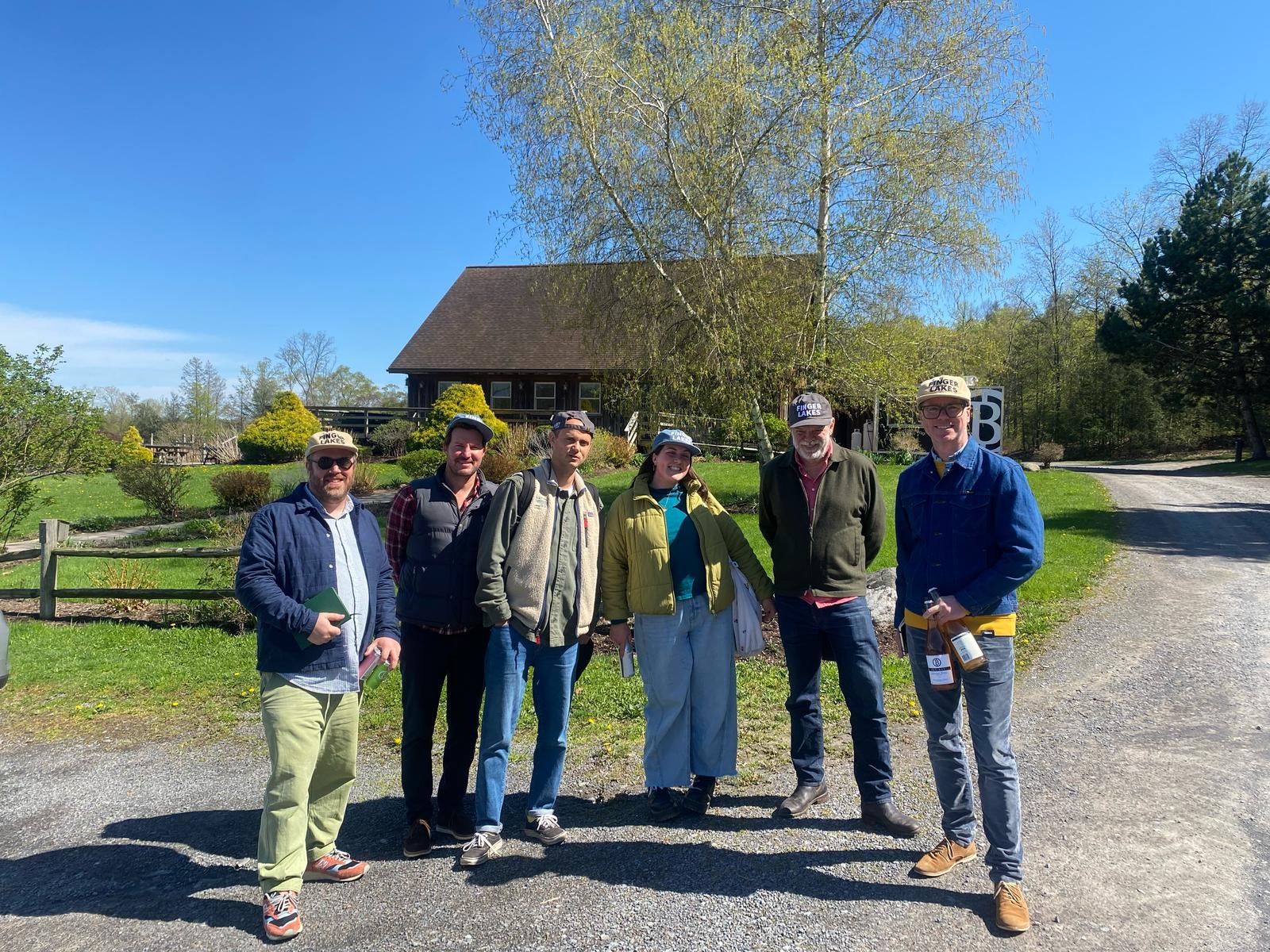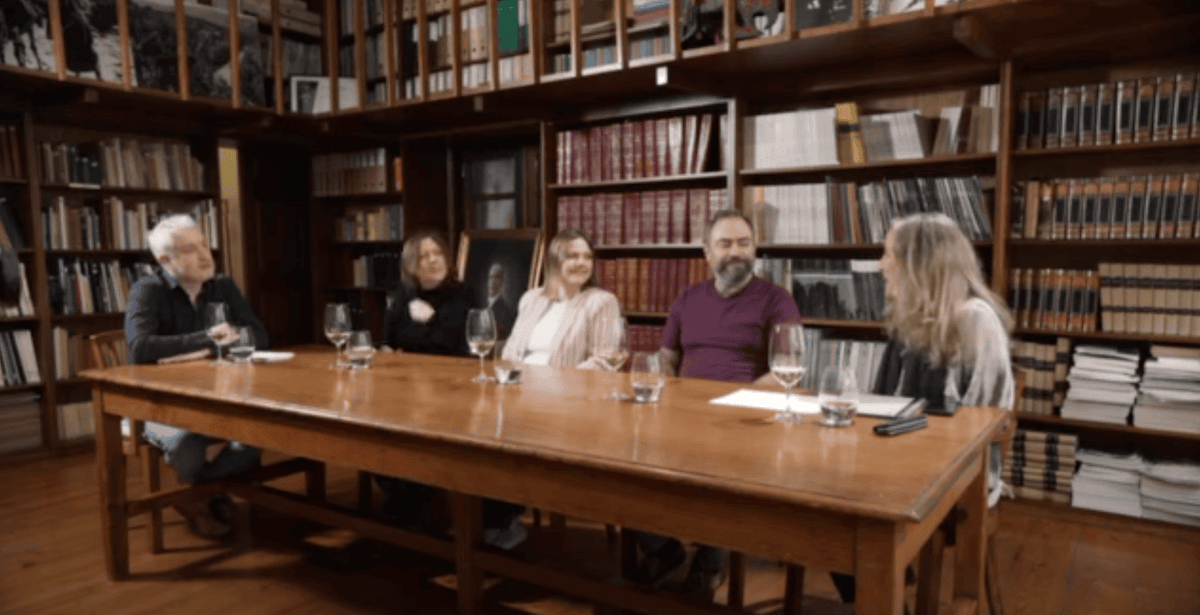Quinta do Sampayo, its vineyards yellow with daisies when we visited earlier this spring, sits atop a gentle hill just 50 minutes north-east of Lisbon. On the horizon are the outskirts of Santarém and Cartaxo, and just out of sight over another hill the fertile flood plain of Iberia’s longest river, the Tejo (Tagus).
Wine has been made here for centuries, but the quinta was bought in the 1990s by successful financier and pharmaceutical entrepreneur, José Júlio de Macedo, fulfilling his dream of owning a fine wine estate. He planted his vines according to the fashion of the time for international red grapes, Cabernet Sauvignon, Merlot and Syrah, as well as some local varieties typical of the Tejo region, 20 varieties in all.
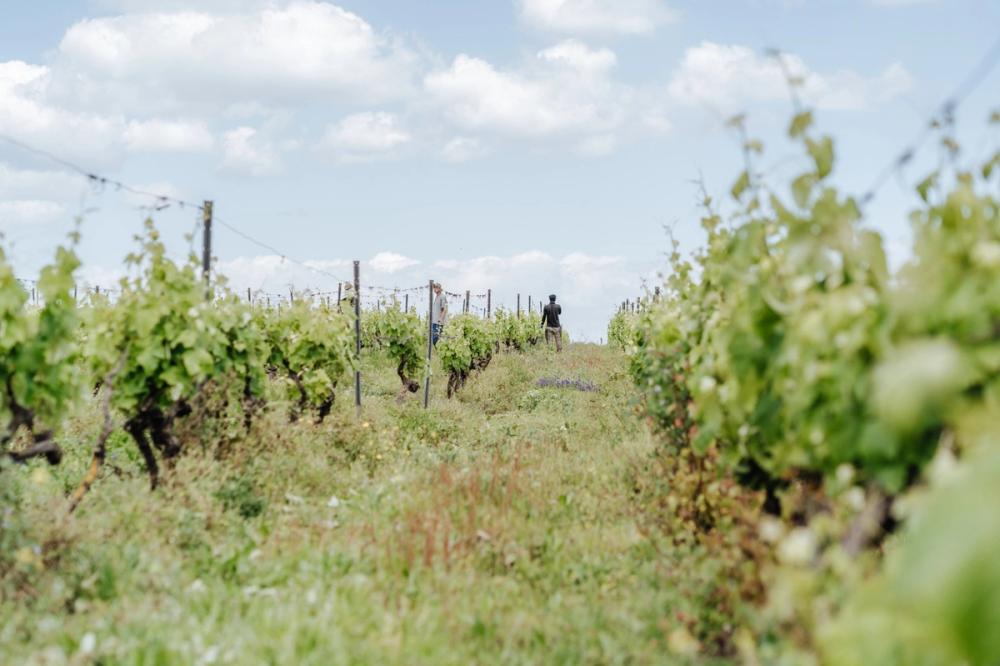
Ana Filipa Macedo and her husband Pedro were inspired to take over the winery and vineyards first started by Ana's father José
By 2013, after massive investment in a large, new, state-of-the-art winery and hilltop country house, the cashflow did not add up, and his pragmatic attitude towards business led him to the painful decision to stop producing wine. The disappointment and sadness haunted him for the rest of his life, according to his only daughter Ana, who took over the running of the estate from the Lisbon office of the family pharma company. For 10 years, she employed people to maintain the vineyard and sold the grapes to other producers.
One day, in 2022, a vineyard worker phoned to ask her if he could keep his donkeys on the estate. Ana’s young daughter asked to visit the donkeys.
“Madalena and her little brother Ricardo just loved it,” says Ana, donkeys, goats, chickens, turkeys... and the cellar, the grandparents’ house and the vines.
“I hadn’t been here for so many years. I didn’t realise how much I longed to come back to this place. It was like opening my life story and re-acquainting myself with lost bits of myself. It came back to me now how my father’s eyes shone with enthusiasm every time he brought me here, every Saturday, to see how the work was going, building the winery and our house, all the barrels, planting the vineyards.”
Based in the smart Lisbon seaside town of Estoril, near work in the city and the international schools, the family visited the estate more and more often, every weekend, spending all the holidays there.
“Then one day around the dinner table, we all began to wonder - what if…?”
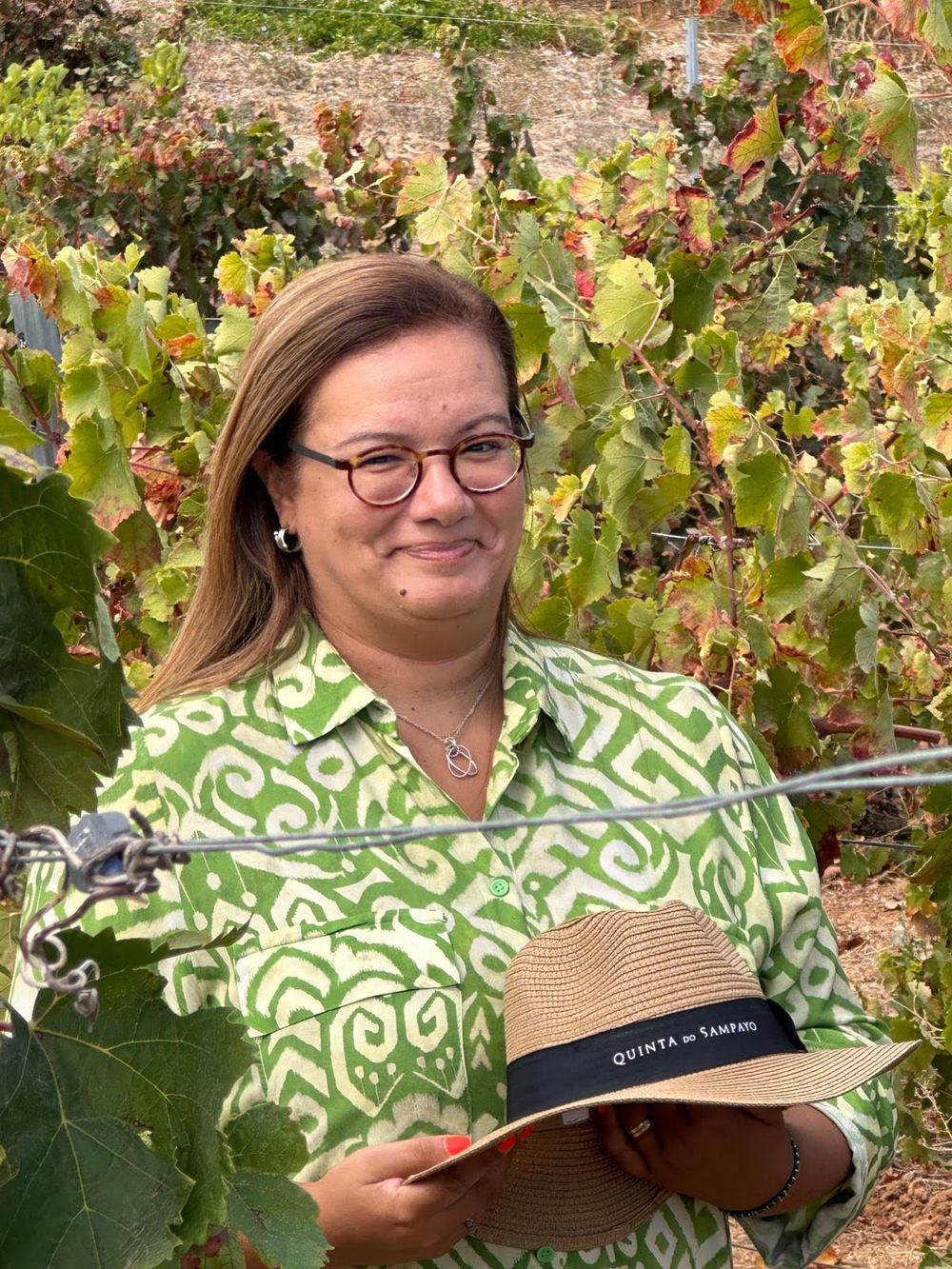
Ana Filipa Macedo: “Then one day around the dinner table, we all began to wonder - what if…?”
Ana switched career, concentrating now on the reinvention of Quinta do Sampayo, “with the total support of my family, especially my mother in Lisbon, who has helped tirelessly,” she says. “Our son is eight now, and all he wants to do is roam around the property with his dog. Both children want to get involved in everything.”
For a little over half a year, Ana’s husband Pedro tried to juggle life on the wine estate with his previous life as a corporate litigation lawyer in Lisbon.
“I don’t see myself turning back,” he says. “Legal work was always work, this is a lifestyle.”
Goals and ambitions
Within the estate’s walls, there are 90 hectares, 56ha of which are for vines, some of them 30 years old, some newly planted, and more to come, and 12ha of traditional olive trees (as opposed to the modern-style olive hedges).
“Our goal,” says Pedro, “is not to produce a lot of wine, but to make wines of high quality, different from our competitors, starting with recovery of healthy soil, regenerative and sustainable agricultural practices, absolute respect for the environment. Our soil is our most valuable asset, and we truly embrace this, not just as an economic strategy to sell more: better soil means better grapes.
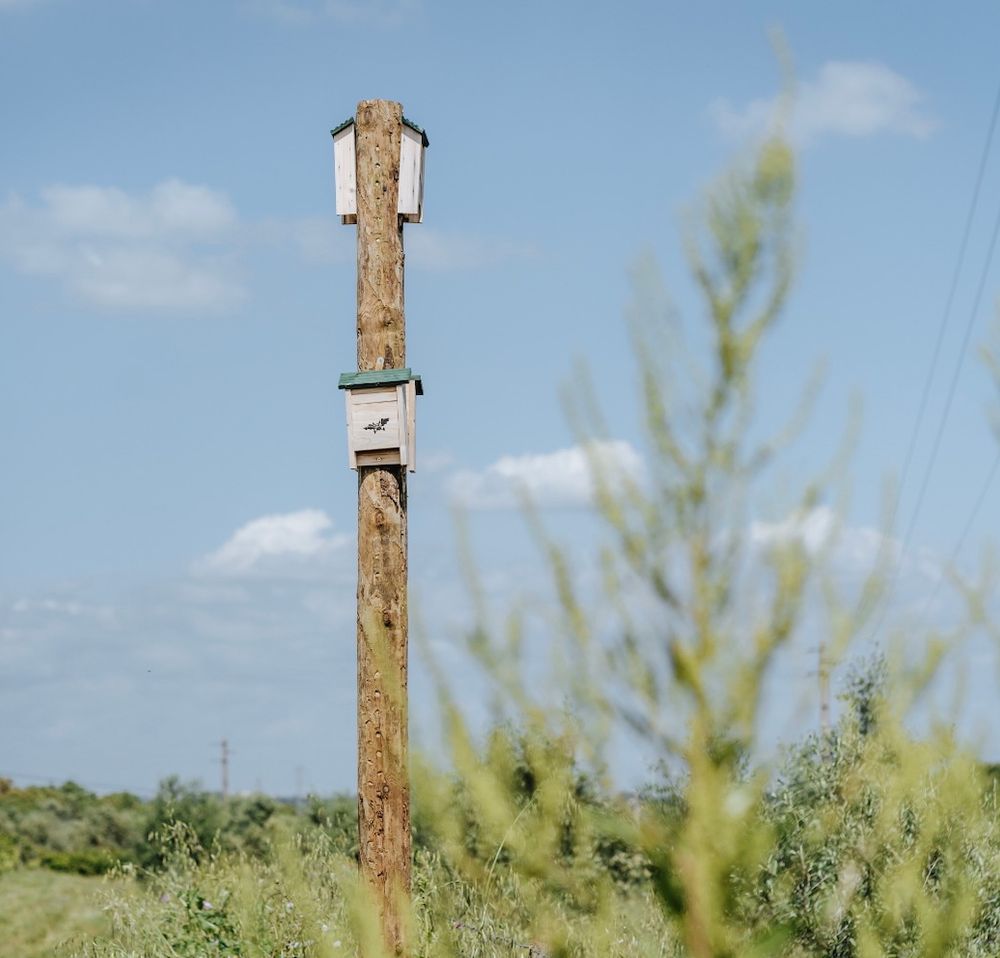
A bat shelter is part of the biodiversity steps being taken at the winery
“We were certified under the national sustainability scheme in early January 2025. We are still selling grapes, but for our own production we are concentrating on characterful Portuguese grape varieties, making the most of the wonderful different flavours. We are starting to build a name. We are making just 20,000 bottles per year so far, but in the future there is way more potential.”
One white, one red, a 2023 Colheita Branco and Tinto, are already on the market under a newly designed label with a representation of the quinta on its hill.
The launch of the 2024 white is to follow in Portugal on June 3rd, 2025, just after the London Wine Fair. Until newly planted vines and vines-to-be start producing, the white is a fresh, bright blend, half of lively Arinto, and half of flowery-fruity Fernão Pires, with an agreeably subtle hint of barrel ageing, more in texture than flavour.
The current red is an easy, elegant Touriga Nacional 40%, Castelão 30% and Syrah 30%, herby, bright, spicy, aromatic, with a touch of grass and again just a hint of oak. Recommended retail price of the wines in Portugal is 9.50€.
Time to build
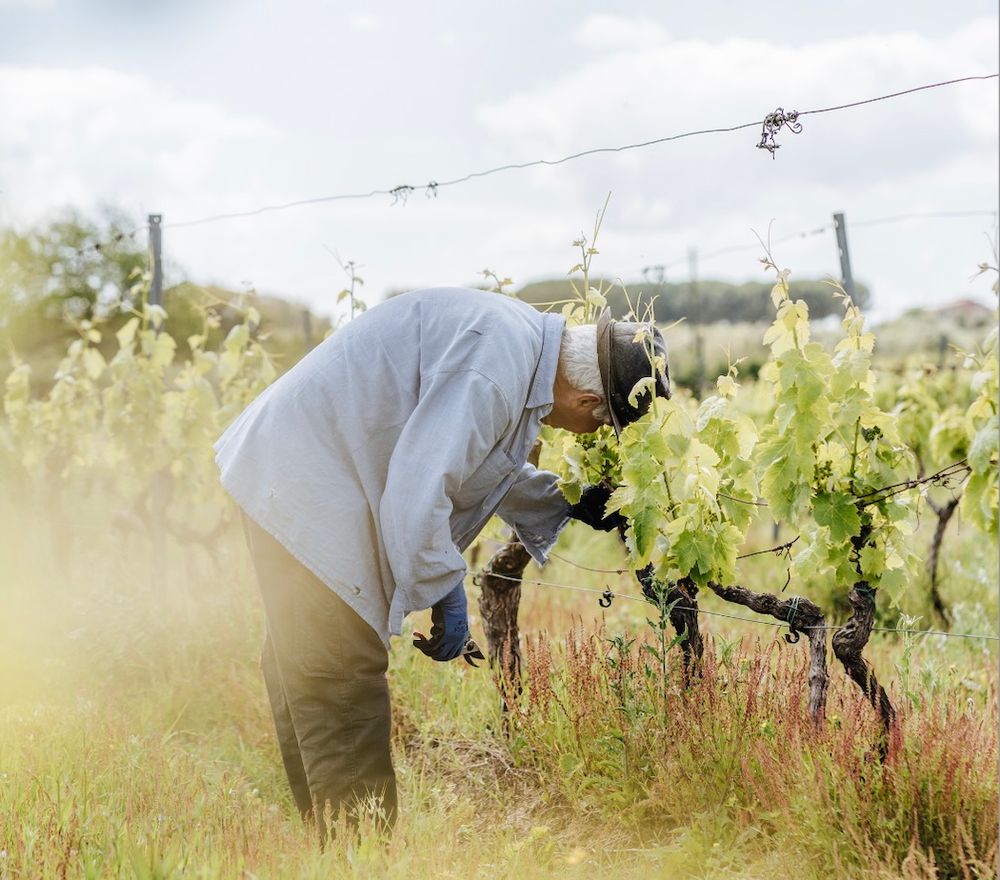
The 90 hectare estate has close to 60 hectares of vines focused on producing quality wines
The team is building. In the vineyards, André Domingos appreciates the estate’s terroir, soils typical of the very stony clay-limestone hills rising from the right bank of the Tejo, a geological sub-region known as the Bairro (a name that reflects the high clay (barro) content of the soils). This soil type helps natural acidity, good for whites, and making elegant reds that need time.
Regenerative agricultural techniques include encouraging natural biodiversity using bug boxes and shelters for bats, and use of cover crops, often rolled rather than cut. On World Soil Day in December 2024, on newly replanted sections of white grapes, they used drones operated by local agriculture and viticulture students to plant a mix of grasses and wild flowers developed to help the soil retain 40% more CO2 – no need for vehicles, no compacting of the soil. Herbs and plants help fix micronutrients in the soil, worms eat the micronutrients, birds eat the worms, bats eat insects.
They are building an irrigation system, supplied by tanks, also a water treatment plant to re-use winery water for irrigation.
“It currently takes eight litres to make a bottle of wine; we hope to reduce it to four,” says Pedro.
Solar panels are set to cover all the roofs.
"Climate change has been aggressive here in the Santarém area. Recent years have been worryingly dry, extremely hot days and sometimes also very hot nights in July and August."
“You need to pick early to retain natural acidity, which can fall quickly,” says Pedro. “This winter and spring there has been extraordinary rain, loads of water in the soil, and once the sun arrived again in late April, the vines were suddenly growing 15cm per day. But this is a windy spot, especially at night when the sun goes down, and that normally helps night temperatures to drop, and guards against diseases.”
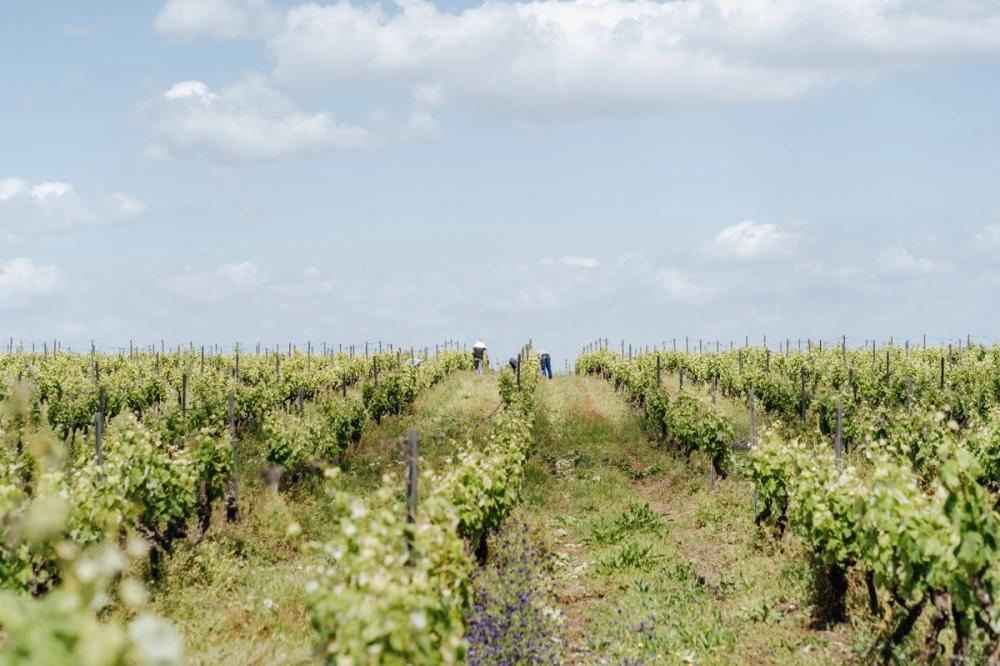
Quinta do Sampayo is going through a major re-development of the winery, cellars and vineyards
Remodeling the vineyards will take time. They have been pulling up virus-affected vines and replanting with Portuguese varieties, including a much higher proportion of white grapes – Portugal needs more whites.
There are extra vineyards now of Arinto and Fernão Pires (the most widely grown white grape locally and in Portugal generally). Last year they planted a hectare of Encruzado (the great white grape of the Dão region to the north). Other new and planned white plantings include Avesso of Vinho Verde fame, Rabigato from the Douro, Gouveio (known as Godello in Spain), Código de Larinho from the north of Portugal, and Antão Vaz, a fine, heat-resistant grape from the Alentejo making honeyed whites with good acidity.
All are now permitted in the Tejo DOC. Sampayo has not historically made DOC Tejo wines, but is now registering for DOC certification for the newly planted grapes.
An unusual favourite of the team is the local Trincadeira das Pratas (a white grape nothing to do with the red Trincadeira and once the most common white grape in the part of the Tejo region here around the town of Cartaxo). It produces pale, well-structured whites with herby flavours.
For reds there is to be more Trincadeira Preta; Caladoc (a Garnacha-Malbec cross, resistant to grape-setting and fungal problems, making rich, deeply coloured reds); 1.5ha of new Touriga Nacional to add to the existing Touriga vineyards; and a hectare of Alicante Bouchet. The grapes are hand-picked for production at Quinta do Sampayo, machine-picked to sell.
In the cellar
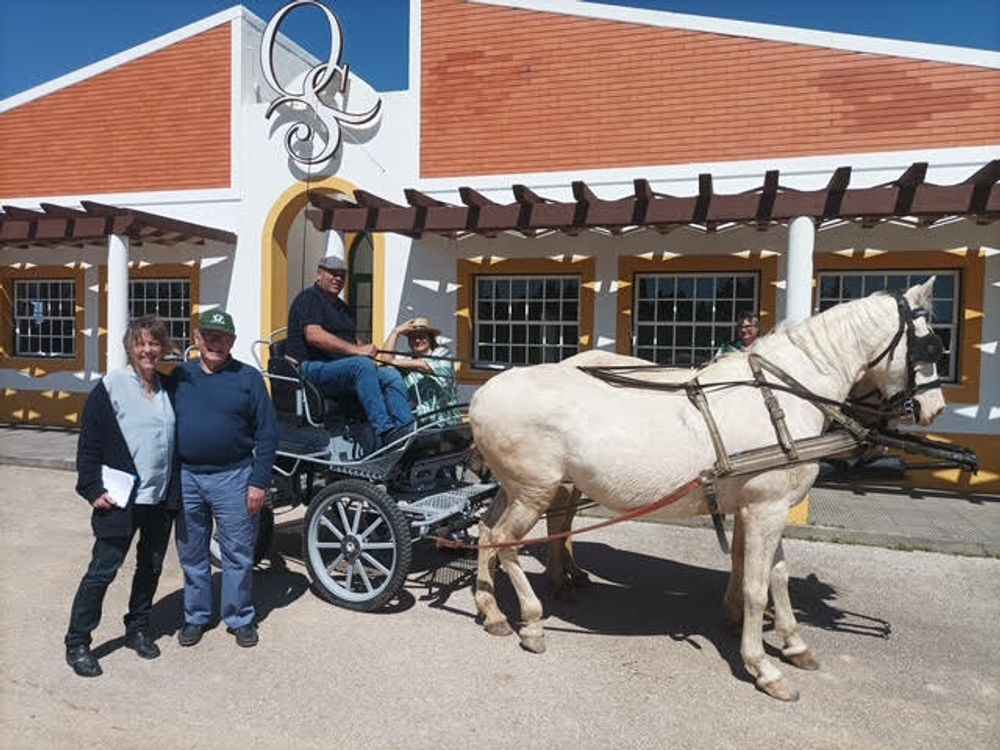
Kathryn McWhirter and Charles Metcalfe at Quinta do Sampayo with the horse and cart used for visitor tours
In the winery, Sampayo’s winemaking consultant, Marco Crespo Manteiga, was this year persuaded to come to work there full time. The cellar, far exceeding current needs, is still modern and effective despite its 30 years, with huge potential to expand production as the vineyards develop. He vinifies all white varieties separately, “but I am a man of blends,” Manteiga says.
Oak barrels nowadays are all French and high toast (formerly some were American).
New bottles to be introduced this year will weigh 395g (compared with 460g before). This has become especially important for Nordic markets, which now ask for bottle weights under 400, and the weight written on the invoice.
Apart from the UK and Scandinavia, Sampayo are prospecting in Canada, Poland, Switzerland and Luxembourg. The US was an early target, but not for the moment.
Since 2023, tourism programmes have become important, with Lisbon less than an hour away.
‘Immersive experiences’ for visitors might include painting with wines, led by Massimo, their Italian artist partner, vineyard picnics, wine blending, a grape picking or food and wine matching experience, or walks, horseback, or carriage rides through the vineyards. A Festa das Vindimas (Harvest Fair) last year hosted 1,000 people and is set to happen again this October.
Ana is clearly delighted by her family’s change of direction.
“I feel I am honouring my father’s vision,” she says, “in my own way, my own vision of what the quinta can be, its wines, the significance they can have for the Tejo region and how our project can support the people round about. We have a wonderful team now to confront all the new challenges, just as committed as are we, the family, to celebrate the past and present and maximise the potential of this land that we all love.’
- You can find out more about Quinta do Sampayo at its website here.
- You can taste the wines and meet the team at London Wine Fair on the Wines Unearthed section, stand X197, as they are looking for distribution in the UK.

